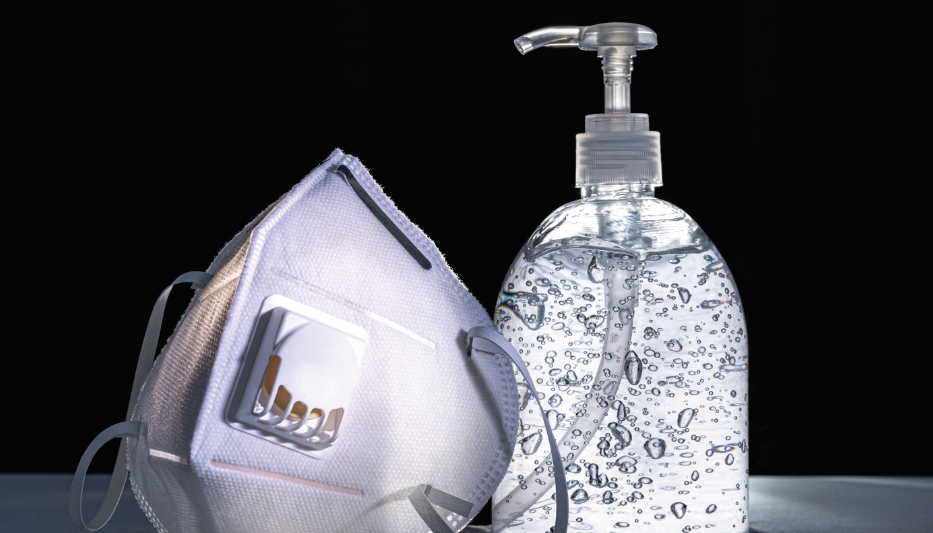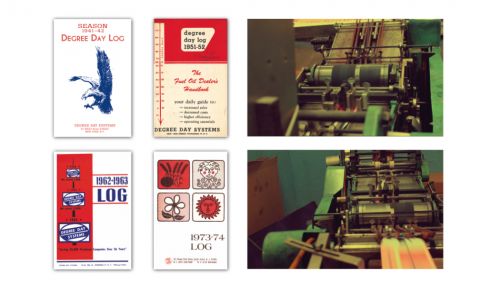All
NEFI Publishes Updated COVID-19 Resources

Recommended best practices and regulatory updates for the liquid heating fuel industry
On the following pages is a list of recommended best practices and regulatory updates as published by NEFI on December 4, 2020. Please note: NEFI is working to continually update this information in accordance with latest available guidance and rulemakings. For the most recent updates, visit nefi.com.
Recommended Business Practices for Heating Fuel Dealers During the Coronavirus Pandemic
It is imperative that your company take precautions to protect the health and safety of your employees and customers. As individual states and localities confront new surges in COVID-19 cases, they may update guidelines for daily work activities and interfacing with customers. The below best practices recommended by NEFI are intended to complement these guidelines and do not replace government rules and regulations. In addition to implementing the best practices below, NEFI strongly recommends consulting the CDC website and fully adopting all state reopening guidelines. Remember most labor practices are based on state laws and regulations. Many of these laws, rules, and best practices are now evolving rapidly. What may have been appropriate earlier in the pandemic may not be appropriate now. All businesses should consult with legal counsel and a qualified physician on these matters.
Recommended Practices for Everyone
- Frequently wash hands with soap and water for at least 20 seconds.
- If soap and running water are unavailable, use hand sanitizer containing at least 60 percent alcohol.
- Avoid touching your eyes, nose, and mouth.
- Implement the CDC’s social distancing measures, including maintaining six feet of distance from colleagues, employees and customers. Always wear a mask when social distancing cannot be maintained.
- Store face masks and other personal protective equipment (PPE) to protect them from damage, contamination or deformation.
- Avoid contact with individuals who are showing symptoms of COVID-19, including fever, coughing, shortness of breath, chills, and new loss of taste or smell. Please refer to the CDC website for the full list of symptoms.
- Cover coughs and sneezes with a tissue and dispose of it immediately, then wash your hands.
- Communicate regularly with suppliers, employees, and customers to keep them informed of any changes to your business.
Recommended Practices for Company-Customer Interactions
- Whenever possible rely on phone, text, email, teleconferencing, or other electronic methods to communicate with customers, instead of in-person conversations.
- Wear face masks and gloves on all service calls. Follow established glove and mask protocols, including proper cleaning or disposal.
- Employees should wash or sanitize their hands before arrival at a job site and immediately upon departure.
- Fuel deliveries made to customers’ homes present low risk factors. However, if possible, send delivery and service invoices by mail or switch to electronic invoicing instead of leaving invoices at the door. Utilize online delivery or service requests and customer payments to avoid unnecessary customer interactions.
- Reassure customers by notifying them of the precautions you are taking to keep their families safe and healthy.
- In general, avoid all direct contact with customers and maintain a distance of at least six feet at all times.
- On service calls, if the customer has separate access to their heating or air conditioning system, request in advance that they make the area available to you directly, e.g., opening bulkheads, cellar doors, etc.
- If the unit is a hot air or air conditioning system, try to avoid opening parts of the system through which air flows, including filters. Rather than installing filters, leave them behind for the customer to install.
- Before entering a customer’s home, ask if anyone in the household is experiencing symptoms, including fever, coughing, shortness of breath, chills or new lost of taste or smell.
- Request that any individuals under voluntary or required self-quarantine or isolation or who are experiencing signs and/or symptoms of COVID-19 remain physically separated from the worker (e.g., request that the sick person go into a different room, level of the home, or outside if weather permits), and communicate remotely with the worker (e.g., by cell phone). Also ask individuals in the home to cover coughs and sneezes. If anyone refuses to comply, leave the home and contact your employer for further instructions.
- Utilize closed doors and walls as physical barriers to separate workers from any individuals under voluntary or required self-quarantine or isolation or who are experiencing signs and/or symptoms consistent with COVID-19.
- Technicians may also use plastic sheeting when they need to occupy specific areas of a home for an extended period, which are also occupied by potentially infectious individuals.
- If an employee develops COVID-19 symptoms, immediately notify all customers who the employee was in contact with while symptomatic and during the 48-hour period prior to symptom onset. If the employee followed the above protocols, the customer’s risk of exposure should be minimal. See section below for further guidance related to symptomatic employees and potential exposure.
Recommended Practices for Employer-Employee Interactions
- Follow the guidelines above for minimizing risk of exposure.
- Train all employees on the signs and symptoms of COVID-19 and how the disease is spread.
- Review with your employees all service polices and procedures your company has put into place.
- Instruct technicians to follow all Occupational Safety and Health Administration (OSHA) guidelines for in-home services.
- Employers should issue facemasks to each employee when necessary to protect their health, and train all employees on proper use of PPE.
- Provide disinfectants and sanitizers that employees can use to wipe surfaces or equipment that they touch.
- Regularly clean and disinfect surfaces that are touched frequently. These include desks, keyboards, office and mobile phones, doorknobs, faucet handles, vehicle door handles, steering wheels, etc.
- Instruct delivery and service personnel to perform their duties without interacting in person with office staff whenever possible. For example, electronically send work orders, delivery tickets and driver routes.
- Employees should be instructed to immediately notify their employer of a potential exposure to COVID-19. Incidents of “potential exposure” include being within 6 feet of an infected person for a cumulative total of 15 minutes or more over a 24-hour period starting from 2 days before illness onset (or, for asymptomatic patients, 2 days prior to test specimen collection).
- Employers should measure a potentially exposed employee’s temperature and assess symptoms prior to them starting work. Temperature checks should happen before the individual enters the office or jobsite.
- A potentially exposed employee should be required to wear a facemask, whenever in the workplace or at a jobsite, for 10 days after last exposure, or 7 days if they have tested negative since then.
- Employees should be sent home immediately if symptoms develop. Advise the employee to follow CDC guidelines for managing symptoms at home. His or her workspace and any company vehicles the employee used should be immediately cleaned and disinfected. Identify individuals who were potentially exposed to the sick employee while he or she experienced symptoms or during the 2 days prior to symptom onset. Those potentially exposed employees should be subject to the protocol described above.
- Employees who are symptomatic and isolated may return to work after meeting conditions described by the CDC.
- If an employee fatality occurs within 30 days of a work-related incident, report the fatality to OSHA within eight hours of finding out about it.
- Keep required records of work-related fatalities, injuries and illness.
- Allow employees to stay home to care for sick family members or for children if childcare is otherwise unavailable.
- Where possible, segment work teams into isolated smaller units so that an outbreak in one unit does not necessarily affect all.
- Understand laws and regulations related to sick time and paid family medical leave, and how they apply to essential employees. Contact your state industry association, state labor department, or a qualified legal or HR professional on the latest employee leave requirements.
Waivers, Extensions and Other Important Regulatory Updates for Heating Fuel Delivery Drivers and Fleet Managers
Commercial Driver’s License (CDL)/Commercial Learner’s Permit (CLP)
- CDL/CLP that expired on or after March 1, 2020 is valid through December 31, 2020 according to a waiver by the Federal Motor Carrier Safety Administration
- Driver does not have to apply to state licensing agency to take advantage of this waiver, but should carry a copy of expired CDL/CLP in vehicle
Medical Certificate
- Driver medical certificate that expired in March, April or May of 2020 must be renewed as of November 1, 2020; driver must undergo a new medical exam to be qualified to drive a commercial motor vehicle
- Driver medical certificate that expired on or after June 1, 2020 is valid through December 31, 2020; driver does not have to apply to state licensing agency to take advantage of this waiver, but should carry a copy of expired medical certificate in vehicle
Hazardous Materials Endorsement (HME)
- For any HME that expired on or after March 1, 2020, state licensing agencies are authorized to grant an extension for up to 180 days; this authorization is valid through December 31, 2020
- All states are granting extensions, but drivers must contact the state licensing agency and apply for an extension
- Drivers who receive HME extensions must submit fingerprints and background check material to state licensing agency at least 60 days before the extension expires
Transportation Worker Identification Credential (TWIC)
- The Transportation Security Administration granted an automatic 180 extension for any TWIC that expired between March 1, 2020 and July 31, 2020
- That extension has not been renewed; for any TWIC that expired on or after August 1, 2020, the holder must complete a new Security Threat Assessment (background check) and renew the TWIC
Random Drug and Alcohol Testing
- FMCSA issued guidance to companies who might be having difficulty complying with the random drug and alcohol testing rates for drivers in 2020; although the guidance did not reduce the 50 percent random testing rates for controlled substances or the 10 percent rate for alcohol, it did indicate that the agency is aware of the problem and might (no guarantee) use its discretion in enforcing these requirements in future compliance reviews.
- The FMCSA guidance states “Employers must continue to select drivers at the required rate of 50 percent of their average number of driver positions for controlled substances, and 10 percent for random alcohol testing during the calendar year 2020. If a test is unable to be completed due to the COVID-19 public health emergency, the motor carrier must maintain written documentation of the specific reasons for non-compliance. For example, employers should document closures or restricted use of testing facilities or the unavailability of testing personnel. Additionally, employers should document actions taken to identify alternative testing sites or other testing resources.”
- Similarly, employers who are unable to ensure that the dates for administering random controlled substances and alcohol tests are spread reasonably throughout the calendar year should document the specific reasons why they did not meet this requirement. For example, in addition to the lack of available testing facilities or personnel, there may be other factors, such as prolonged or intermittent driver furloughs due to the impacts of COVID-19.
Please keep in mind that any of the information above may have changed since the date of this publication. For the latest updates, visit nefi.com.
Related Posts
 100 Years of Helping Fuel Retailers Deliver!
100 Years of Helping Fuel Retailers Deliver!
Posted on August 18, 2025
 U.S. Competing to Secure Critical Minerals
U.S. Competing to Secure Critical Minerals
Posted on June 16, 2025
 The Clean Air Act, the EPA, and State Regulations
The Clean Air Act, the EPA, and State Regulations
Posted on May 14, 2025
 Day Tanks Support Back-up Generators in Extreme Conditions
Day Tanks Support Back-up Generators in Extreme Conditions
Posted on March 10, 2025
Enter your email to receive important news and article updates.
